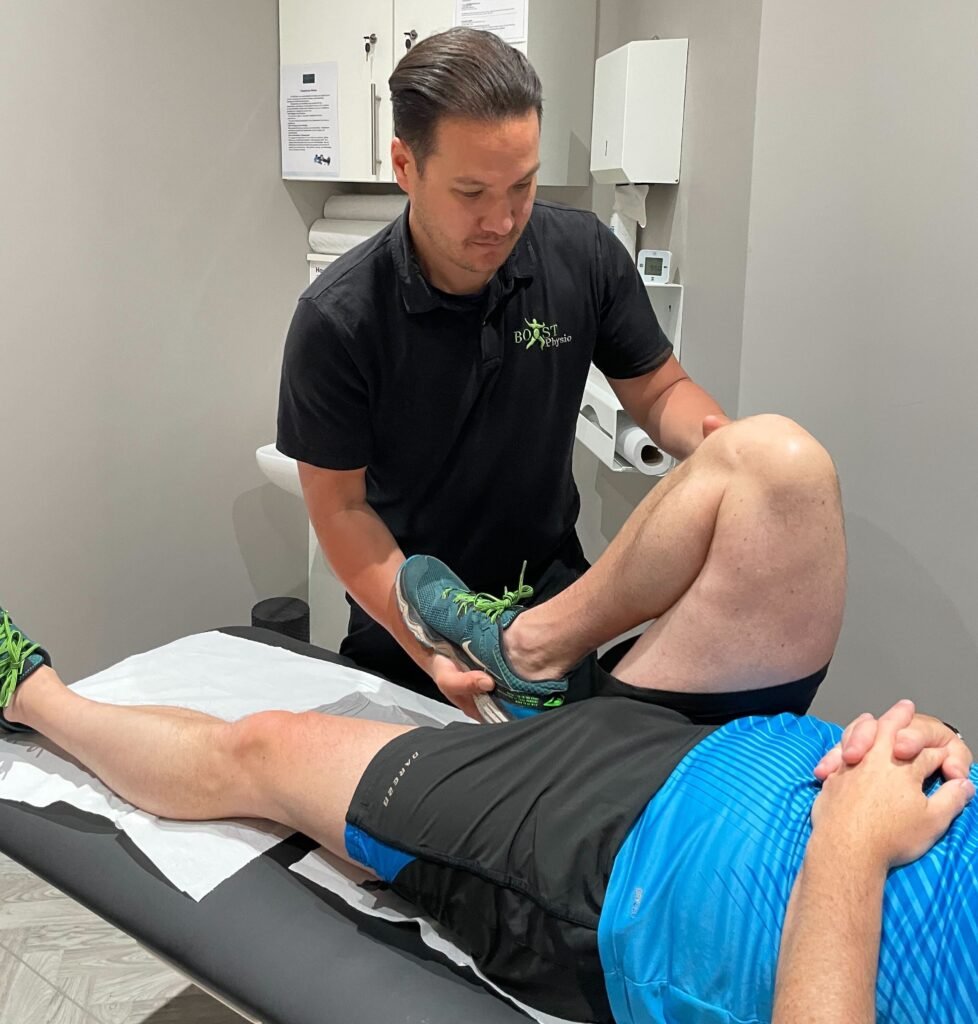Common Features And How To Self Diagnose
Kneecap pain, often called anterior knee pain or patella-femoral pain syndrome (PFPS) can be very debilitating, often causing pain with simple activity such as walking down stairs. We’ve created this guide highlighting how wide spread kneecap pain is, common features and 3 easy self tests you can do to help identify if your knee pain might be coming from your knee cap area.
Prevalence:
- General Population: The prevalence of anterior knee pain in the general UK population is generally reported to be around 6-7%. This includes both chronic and acute presentations of the condition.
- Young Adults and Adolescents: The prevalence is higher in adolescents and young adults, with studies indicating rates ranging from 15-33% in this age group. PFPS (patella femoral pain syndrome) is particularly common in female adolescents.
- Military Populations: In military personnel, the prevalence can be quite high, with reports suggesting that up to 30-40% of recruits may experience anterior knee pain during basic training.
5 Common Features Of Patella-Femoral Pain Syndrome (PFPS):
- Anterior knee pain: Pain typically felt around or behind the kneecap (patella), especially during activities.
- Pain with activities: Discomfort or pain when performing activities that involve bending the knee, such as squatting, stairs, running, or sitting for long periods (theatre sign).
- Crepitus: A sensation of grinding, popping, or cracking under the kneecap area, particularly when moving the joint.
- Swelling: Mild swelling around the kneecap, though not always present.
- Quadriceps weakness: Weakness or imbalance in the quadriceps muscles, which can contribute to improper tracking of the patella and increase pain.
3 Self Tests To Help Diagnose PFPS
Alice has created this video of three self-tests that can help indicate the presence of patella-femoral pain syndrome (PFPS), also known as runner’s knee:
1. Squat Test
- How to perform: Stand with your feet shoulder-width apart and slowly squat down as if sitting into a chair, keeping your back straight and your knees behind your toes.
- Positive sign: Pain around the kneecap during the squat or when returning to the standing position suggests PFPS.
2. Clark’s Test (Patellar Grind Test)
- How to perform: Sit with your leg extended and relaxed. Using your hand, gently press down on the upper edge of your kneecap. While keeping the pressure, contract your quadriceps (thigh muscles) as if trying to straighten your leg further.
- Positive sign: Pain or discomfort under the kneecap during this movement may indicate PFPS.
3. Sitting Knee Extension Test
- How to perform: Sitting, extend your painful knee to the straightest position possible, focussing on squeezing your muscles around your knee as tightly as possible.
- Positive sign: Pain in the front of the knee during this movement, particularly towards the straight position, could be a sign of PFPS.
If any of these tests cause pain or discomfort, it may indicate patella-femoral pain syndrome.
If you need help solving anterior knee pain, our team of specialist muscle-skeletal physiotherapists will be able to help you.
